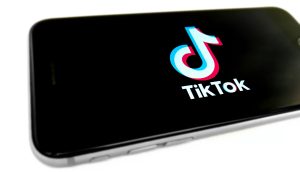Canada made its mark at the inaugural Design Lions, with a Gold going to Toronto-based GJP for its brochure for waxing studio Gee Beauty and a Silver to Taxi Canada for its 15 Below work.
The Design jury, which didn’t include a Canadian, was impressed by the simplicity of the Gee Beauty brochure featuring diagrams of the array of personal grooming options the studio offers. ‘It’s one of those extremely sensitive subjects, a bit taboo, and they handled it with wit, elegance and humour,’ says Steff Geissbuhler, founding partner at NYC-based C&G Partners. ‘The text is so well written, it’s brilliant.’
He says the jury was also struck by the 15 Below poster for Taxi’s jackets for the homeless project, which look like a worn blanket on one side and have instructions on how to insulate the coat on the flip side, including crumpling up the poster and stuffing the pockets to keep warm. ‘We all felt that it was amazingly strong to talk so directly to a market of homeless people,’ says Geissbuhler. ‘The simplicity of the design was so appropriate. It didn’t try to be fancy. It was true to the subject matter.’
The Design Grand Prix went to London-based Turner Duckworth for its updated identity for Coca-Cola. ‘Speaking as a designer, it was simply the best piece of work. It was clear and simple,’ says jury president Rodney Fitch, chairman/CEO of London-based design studio Fitch. He opened the press conference by declaring it a momentous occasion. ‘For the first time ever, we as designers can see and compare how our design work works and doesn’t work in a communications role.’
Of the 1,200 entries, many were from ad agencies, since awareness of the Lions is still low among traditional design studios.
It was Taxi 2 Toronto’s Minimalism site for Mini that won Canada a Cyber Gold, the lone Canadian Lion in this discipline.
Canadian Cyber judge Dominique Trudeau, interactive & design CD with Taxi Montreal, says the jury was looking for three things: firstly, great ideas that would work for the product; secondly, great use of technology and the media; and thirdly, craft – great design, writing and casting.
Mini online has always had the craft side down. In the case of Minimalism (a site that lets consumers decide how much info they want by choosing the length of the pitch they listen to – which entailed a plethora of scripts), Trudeau says the jury was swayed by how the team acted upon the insight of the consumer car buying experience and made that happen in a unique way. ‘No discussions, they just loved it, because it was the best use of media for that consumer insight.’
Trudeau says the Cyber field used to focus more on breakthrough technology and its accompanying buzz factor, but ‘now it’s about communicating something.’
The Cyber Grand Prix went to work from Japan, Norway and the US: Uniqlo’s Uniqlock, out of Projector, Tokyo; Sol Comments, out of Oslo’s MediaFront for Scandinavia Online; and Year Zero for Trent Reznor out of 42 Entertainment, Pasadena.
Jury president Colleen De Courcy, founder/chief digital officer of TBWA Worldwide, US, says of the marathon judging exercise (there were 2,757 entries): ‘It’s a really transitional and important year for this jury and the industry at large. As what we do becomes ubiquitous, it becomes part of every other jury here. Film versus Viral, Events, Stunts, Direct. We had questions like, ‘Is it half a medium, half a craft?” The conclusion? ‘Digital is not an annex or an add-on. I’ll be very happy when the word ‘digital’ is irrelevant.’
De Courcy adds that more entries are coming from outside the traditional digital shops, which created a broader range of submissions, adding that ‘great interface design has become table stakes,’ and the nature of the interactivity was also key to the jury.
For the Grand Prix, the jury upheld Uniqlock as progressive work for its approach to using analog media in a way that was admired by all spectrums of the industry (check it out at http://www.uniqlo.jp/uniqlock/). The Sol work got a nod for its innovative creativity (banner ad space on the news website where copywriters take turns playing off news stories and scribbling their copy on the fly with a pen tablet – see the live ads at http://solcomments.com/en/live.html). And Year Zero for embodying a variety of skills at their best, which couldn’t exist without being virally spread. ‘There is a skill and craft around engaging audiences in propelling along a brand. It was inherently digital in the middle.’
Meanwhile, Canada didn’t fare as well in the Press category, turning up empty-handed. Canadian judge Paulette Arsenault, partner, creative at Montreal-based Palm Arnold, points to the judging process as a potential explanation as to why none of Canada’s 16 short-listed campaigns won a medal – specifically that entries are pinned on the wall and you see them from afar at first. ‘Some of the Canadian pieces were smaller. I feel that some of them didn’t make the cut for that reason. I find Press is getting closer to Outdoor.’
Arsenault says she had to step in at one point to help Taxi’s Covenant House work get onto the short list. Many judges didn’t get the stock market concept at first, so she explained that it was a clever strategy because many potential donors frequently check the stock market. ‘There’s always a danger when you explain stuff from your own country [because] some might accuse you of being patriotic,’ she explains. ‘I didn’t say too much, because that’s how you get into trouble. You have to be fair; otherwise you lose your credibility.’
She suggests that in the future, Canadians submit their most visually driven print work for the Press category, since most of the winners this year had what she calls ‘poster power.’
The Press Grand Prix went to DDB South Africa for its cheeky Energizer campaign, with multiple executions featuring children getting up to no good, like painting a white dog or spitting off the rooftop, because the batteries in their toys ran out. ‘It’s a fresh idea with fresh insight, and it’s convincing,’ says Arsenault. ‘It’s very human. I remember spitting on passersby. I cut my sister’s hair into a boy cut. We all got into trouble.
‘I’ve noticed it’s the humanity that wins all the time,’ she continues. ‘You judge with your heart.’























